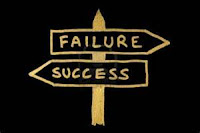 |
| J. S. Bach. |
It is rarely, if ever, necessary to use pedal in Bach. It can sometimes be a convenience, though, especially if you share my predilection for physical ease. In this example from the Sinfonia No. 7, it is quite possible to
 |
| Don't Do This. |
simulate a reasonable legato with the fingering I've supplied. Fingerings by some editors suggest an even more extreme finger legato, requiring contortions usually reserved for circus performers. As much as I enjoy the circus, I prefer to leave it under the big top.
 |
| Sinfonia 7, M 5, Legato Sixths. |
You may have noticed that when a finger is repeated, finesse is required to keep an illusion of legato. This can be accomplished by remaining very close to the keys and minimizing each gesture. However, this passage is an ideal example of how we may use the resources of the piano in order to produce an even more convincing legato. Yes, I speak of the damper pedal, but I’ll deny it if you tell anyone.
 |
| Bach Sinfonia 7, M5, Syncopated Pedal. |
 |
| It's the One on the Right. |
Here are the uses of the pedal in Bach: add warmth or accent to a single sonority; provide a connective link in a leap. We must always be diligent in our efforts to avoid blurring sonorities. With this in mind, we may use a syncopated pedal to enhance the illusion of legato in this passage.
The arrows indicate the direction of forearm rotation. For example, the second finger G-sharp in the alto sends the hand rotationally rightward, so that it may turn back into the sixth with four and thumb.
When playing Bach on the piano, use the piano's resources. Don't try to imitate the limitations of the harpsichord. Expand. Grow. It will still sound like Bach. I promise.




















